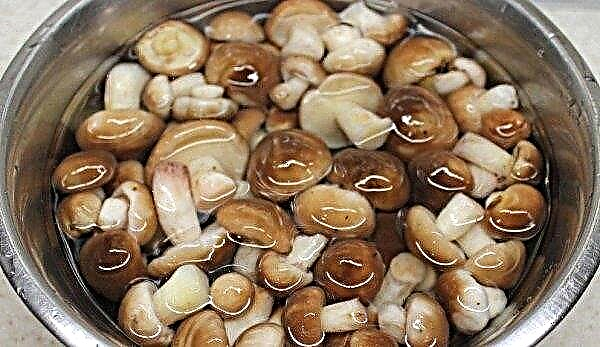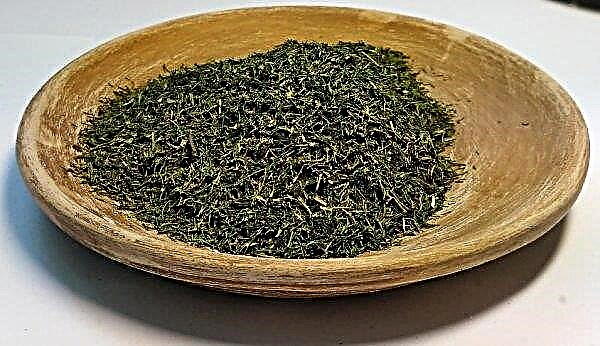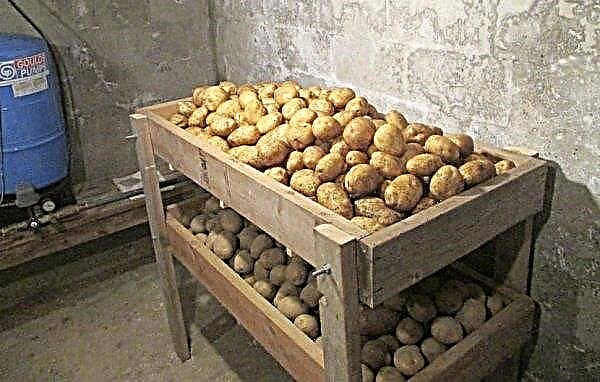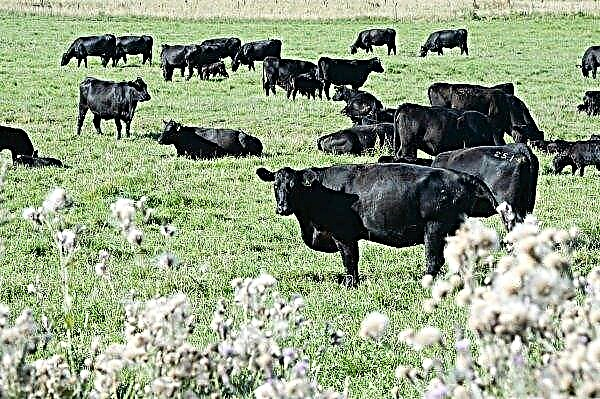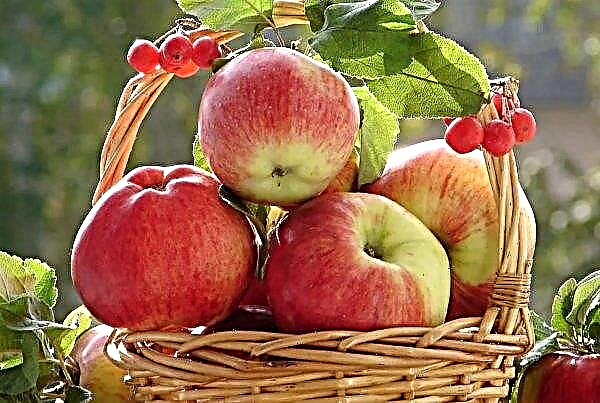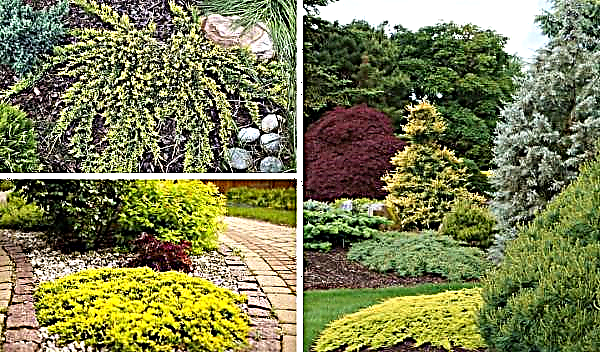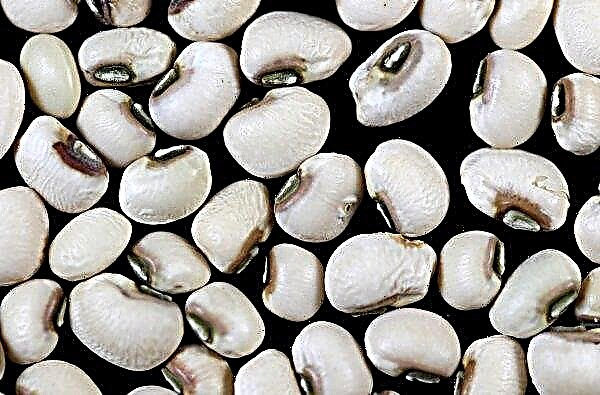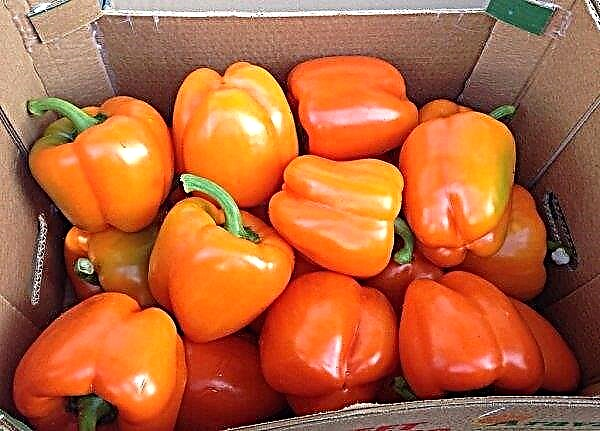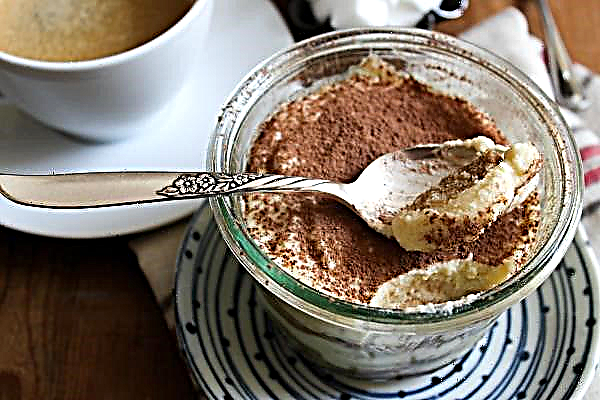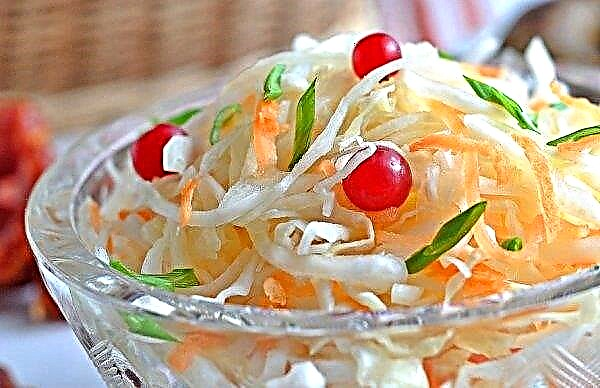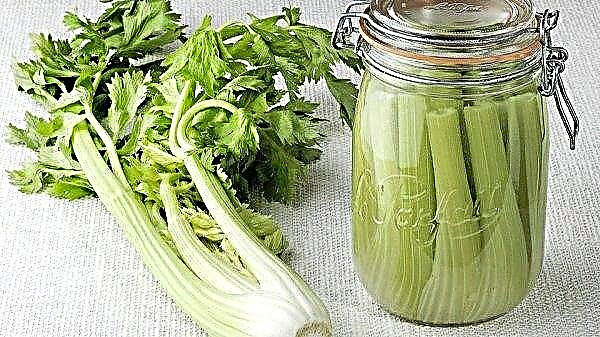The well-proven Sugar blackcurrant variety is capable of providing a generous supply of berries. From it it will be possible to prepare a large number of jars of jam, freeze, boil juice, use for treatment.
Description of blackcurrant variety Sugar
Sugar blackcurrant shrub also known as Ordinary Miracle. The bush attracts with its decorative effect due to spreading shoots, beautiful green foliage and a scattering of heavy bunches of glossy, delicious dessert berries. Siberian currant culture An ordinary miracle is planted not only for harvesting, but also as an element of landscape design decor.
Did you know? Blackcurrant leaves are used as flavoring additives in the manufacture of tea and vodka in Russia.
Selection history
The variety was bred for cultivation in the harsh conditions of Siberia at the end of the XX century. in Novosibirsk. Then it successfully spread throughout Russia and other countries, having established itself according to the description of gardeners as a frost-resistant, large-fruited variety with excellent taste.
Appearance, characteristics of berries, ripening time, yield
A variety of medium ripening. Sugar shrub has fairly high erect shoots (up to 2 m) that do not require support. On juicy foliage, pronounced veins are traced. When flowering, a small size of a soft yellow shade of the flower is observed.
 Berries on fruit brushes are about 10 pcs., All of them are medium to large. The mass of berries is up to 5 g. The skin is dense, shiny with a stable cup on top.
Berries on fruit brushes are about 10 pcs., All of them are medium to large. The mass of berries is up to 5 g. The skin is dense, shiny with a stable cup on top.
Taste of juicy berries at a high level: 9.5 out of 10 points. Productivity is up to 12 kg of berries from a bush. The variety is not afraid of lowering temperatures to -45 ° C. It does not require frequent watering. Pests attack extremely rarely. To diseases high resistance.
When eating fresh blackcurrant, a person will receive B vitamins: B5, B6, B1, a large amount of vitamin A and C. Also, blackcurrant berries are rich in minerals, including phosphorus (P), sodium (Na), magnesium (Mg) as well as calcium (Ca) and potassium (K). Blackcurrant culture contains phosphoric acid and tannins, which are also healthy phytonutrients and antioxidants. Vitamin C in 100 g of fresh fruits is so much that it is able to provide more than 300% of the recommended daily intake of this vitamin.
Did you know? Oil obtained from blackcurrant seeds is used in the cosmetics industry. Most often used in the manufacture of skin care products.
Advantages and disadvantages of Sugar currant
- Reviews gardeners talk about the many positive qualities of this culture. Of these, there are:
- high frost resistance;
- large-fruited;
- resistance to drought;
- fruiting duration up to 15 years;
- high resistance to diseases;
- excellent tastes of fruits;
- low maintenance
- decorative shrubs;
- high resistance to diseases and parasites;
- transportability.
- Sugar variety has very few disadvantages. Some of them can hardly even be called disadvantages, rather, features in care. These include:
- obligatory rejuvenation of bushes;
- cracking of fruits in case of late collection;
- the need for cross-pollination.
Agricultural technology
Agricultural activities are important for growing any crop. You need to choose the perfect place to grow, comply with the timing and planting algorithm. It is important to water the plant in a timely manner, mulch the soil, perform anti-aging pruning.
Important! If the currant bush refuses to grow, then the plant lacks organic matter. When you add them, this problem will be solved by itself.
Seat selection and landing
When choosing a place to plant, you need to avoid "pockets" and hollows that are prone to late spring frosts, which can harm the plant.
Shrubs need a lot of sun (a shadow from young trees is possible). If a blackcurrant bush appears in less promising conditions, it will still give good harvest results. The main thing is that the plant receives the morning sun and daylight shadow.

Since the variety was bred for harsh winters and difficult changeable weather conditions, any soil is suitable. Of course, if the soil is fertile, it will only bring a positive result when grown. Wetlands and the proximity of groundwater are not suitable for the plant. It is advisable to avoid sandy soils, as they dry out too quickly. The plant does not respond well to alkaline or salty soil. Acidity is preferred from 6 to 6.5. Improving the quality of acidic soil will help in the preparation of the pit for planting 0.3-0.5 kg of lime per 1 m².
It is better to plant blackcurrant with an open root system in early autumn (September - October), plants in containers can be planted at any time of the year if the soil is not too wet. Several shrubs (preferably of different varieties) are planted at a distance of 1.5-1.8 m from each other.
Before planting, black sugar currant seedlings are soaked in a bucket of water for several hours.Important! Sugar blackcurrant variety is planted next to other varieties for better yield, as it requires cross-pollination.
Landing:
- Remove perennial weeds on the site.
- Dig a hole 50 × 50 cm a couple of weeks before planting. Most often two-year-old seedlings are planted. For older specimens, the holes are dug 60 × 60 or 70 × 70 cm. The main reference point for the depth and width of the hole is the parameters of the overgrown root system. When planting the plant, the roots need to be well spread. Plants in a container are planted in a hole 2 times larger than the circumference of the pot. Deepen a little more than it grew in the container.
- A drainage layer must be required. Use pebbles, crushed stone, mixed with sand, chipped brick or tile.
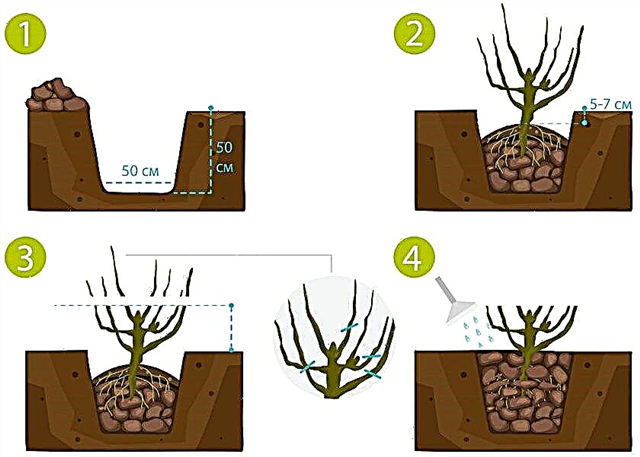
- Add rotten manure, compost as a fertilizer (a total of 10 kg per 1 m²), 2 tbsp. l granular double superphosphate. All fertilizers added will increase crop productivity, enrich the soil with nutrients. If organics are few, then you can add 2 handfuls of mineral complex fertilizers with phosphorus, nitrogen and potassium (without chlorine).
- Pour 1 bucket of water into the pit. In 2-3 weeks. before planting, the soil will have time to sag.
- Set the seedling at an angle of 45 °. Sprinkle with earth, gradually tamping to fill all the voids.
- Cut off all shoots with a sharp secateurs so that 2-3 buds rise above the surface of the soil.
- Water the plant with 1 bucket of water.
- Mulching the soil for blackcurrant is a mandatory aspect that will prevent weeds from appearing and keep the soil moist. As a mulch, you can use black lutrasil. It is cut around the circumference of the future crown with a hole in the middle for plant growth. Strengthen with pegs. Also, as mulching material, gardeners often use: sawdust, wood chips, peat mixture, dry grass and foliage, chopped bark. The mulch layer should be 5-8 cm.
Important! Weeding with a pitchfork or hoe cannot be done. They can damage the roots.
Care
Any plant after planting requires care. To root, the plant needs moisture. The bush of black currant Sugar in the first 2 weeks will require watering 2 p. / Week. Then this interval is reduced so that the roots do not rot. The place near the bush must be kept completely clean throughout the life of the plant, preventing the appearance of weeds.

Fertilizing in the first year the plant will not need. Later, when the ovaries begin to appear, sugar blackcurrant can be fed with liquid fertilizer.
Feeding on starch
For berry culture, carbohydrate fertilization during flowering (May - June) is useful. Gardeners positively note starch top dressing: boil 200-300 g of starch in a 3 liter pan to make a thick jelly. Dilute the resulting mixture in a 10 liter bucket. Pour 2-3 liters under each bush. Berries after such top dressing will be sweeter and larger.
Some summer residents instead of such fertilizer add potato peelings under each bush.
Mullein dressing
Dilute the existing part of mullein with water, so that the volume increases 3 times. 10 l of fertilizer is applied per 1 m².

Phosphorus-potash dressing
Potassium phosphate fertilizer is given to the plant after harvesting the fruits. It is diluted in 10 liters of water, adding 30 g of fertilizer.
Did you know? In Britain, from 1942 to 1965, blackcurrant syrup was given free to children under the age of 2 years to increase immunity. Since that time, berry culture began to be grown throughout the country.
Pest and Disease Control
Sugar blackcurrant is rarely affected by disease. However, some drugs, such as Fitodoctor and Fitosporin, effectively cope with a wide range of fungal and bacterial infections.
 For prevention from pests, the plant is sprayed with a solution of soda ash or baking soda.
For prevention from pests, the plant is sprayed with a solution of soda ash or baking soda.
If pests, such as aphids or firetails, appear, after flowering, currant shrubs are treated with Iskra or Aktellik.
Trimming and shaping a bush
For pruning use secateurs or delimbers for thicker, older shoots. Annual shoots are the most productive. Two-year-old shoots will not produce much fruit, and older shoots will become unproductive over time, so some growths must be removed every year.
 Fig. 1. Currant pruning: a - annual seedling; b - a biennial bush; c, d - shortening of shoots. Fig. 2. Currant bush before anti-aging pruning (a), after it (b) and pruning of a neglected bush (c).
Fig. 1. Currant pruning: a - annual seedling; b - a biennial bush; c, d - shortening of shoots. Fig. 2. Currant bush before anti-aging pruning (a), after it (b) and pruning of a neglected bush (c).
In the first autumn after planting, the weakest growths of the current season should be cut slightly above the soil level. Next fall, weak shoots are removed. This will stimulate new growth. On the third and fourth autumn, old and dry shoots are removed, especially at the base of the bush, in order to make room for the appearance of young ones. Every summer after harvesting, you need to cut out lateral growths by 1/3.
Did you know? The English word "currant" has been used for the name only since 1550. The older English name "ribes" has an ancient Indo-European origin and has spread in other languages.
Wintering
For winter, the plant does not require shelter. Frost resistance is very high. He needs only high-quality mulching of the soil.
Harvesting and transportation of the crop (shelf life), shelf life of berries
Fresh currants have a black glossy color, if the berries are not stored in the refrigerator, then the gloss will disappear, and the berries will wrinkle. To keep them longer (7–10 days) in an attractive form, they must be kept in a cool room or in the refrigerator. It is necessary to remove soft, shriveled berries in time, especially with leaking juice. Sugar blackcurrant variety is excellent for transportation, as the berries are very dense.

Having planted this variety of currant culture in your own area, you can get a storehouse of vitamins, which will last for a whole year. This is because berries can not only be consumed fresh, but also frozen, dried, and cooked delicious treats.


